Syn.: Pediculariopsis verticillata (L.) Á. Löve et D. Löve
Family: Orobanchaceae Vent.
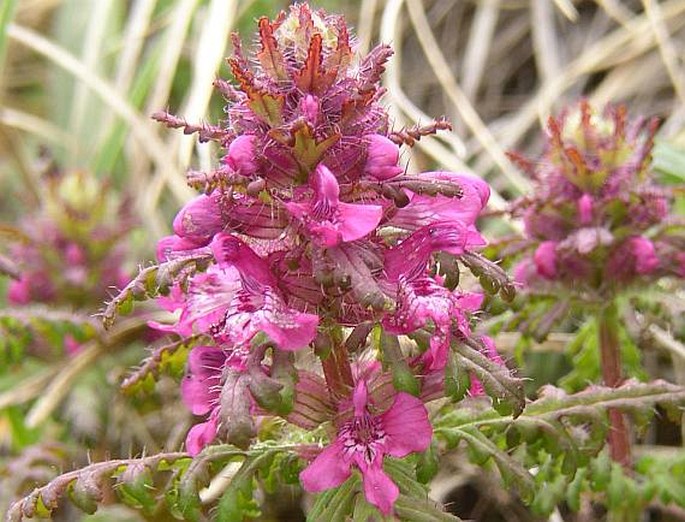
Distribution: Arctic-alpine species – the Arctic and higher mountains of Europe (northern part of European Russia, the Carpathians, Alps, Apennines, mountains of the Balkan Peninsula), Asia (Siberia, Russian Far East, Mongolia, northern and central China, northern Japan, Korea) and northwestern part of North America (from Alaska to British Columbia).
Ecology: It grows in mountain grasslands, moist slopes, also in tundra, in China up to an elevation of about 4400 m asl. Blooms from June to August.
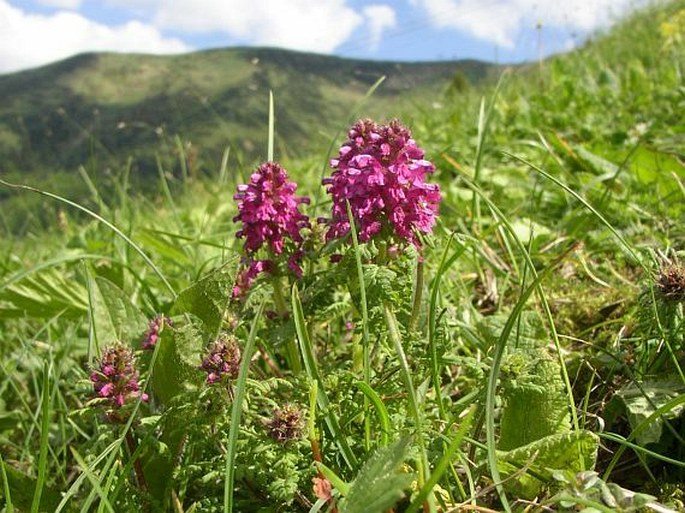
Description: Perennial, hemiparasitic herbs. Stem 5–20(–30) cm tall, erect, glabrous or hairy. Basal leaves petiolate, lanceolate in outline, pinnatifid, with ovate, crenate segments, cauline leaves in whorls of (2–)3–4, similar to the basal, with shorter petioles. Flowers in whorls in a dense spike; bracts lanceolate, often purplish, hirsute; calyx often purplish, hairy only on the veins, teeth entire; corolla 12–18(–20) mm, purplish-red, rarely pink or white, glabrous, tube twice as long as calyx, limb 2-lipped, upper lip galeate, almost straight, lower lip 3-lobed, lobes of lower lip rounded. The fruit is a capsule.
Note: The genus includes about 600 species widespread in the frigid-temperate and alpine zones of the Northern Hemisphere.
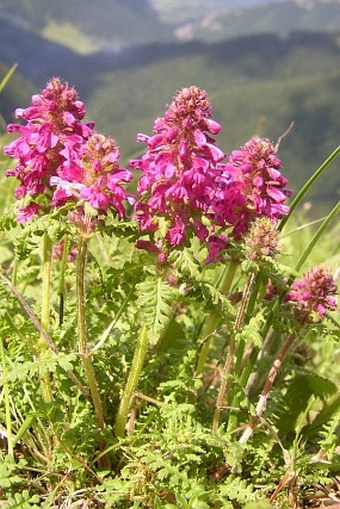
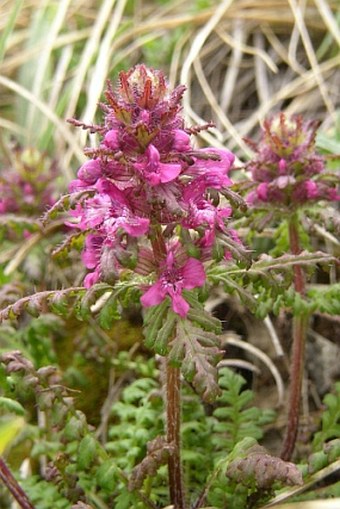
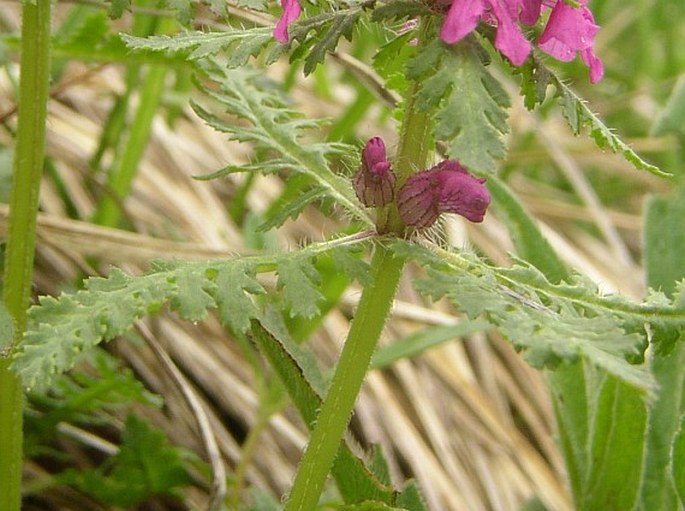

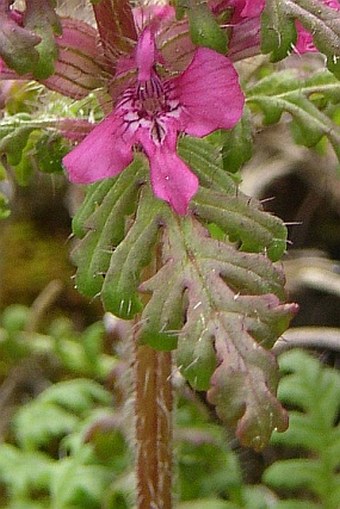
These images were taken in Slovakia, Malá Fatra (June 2004).


